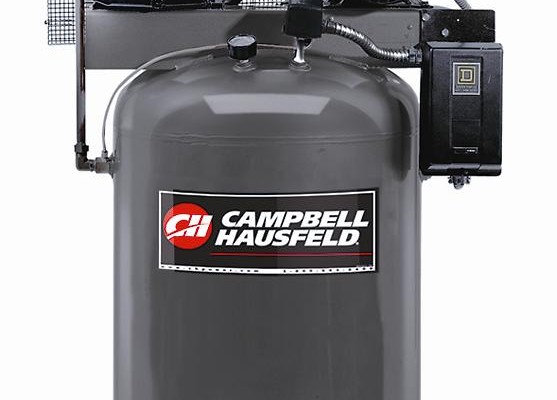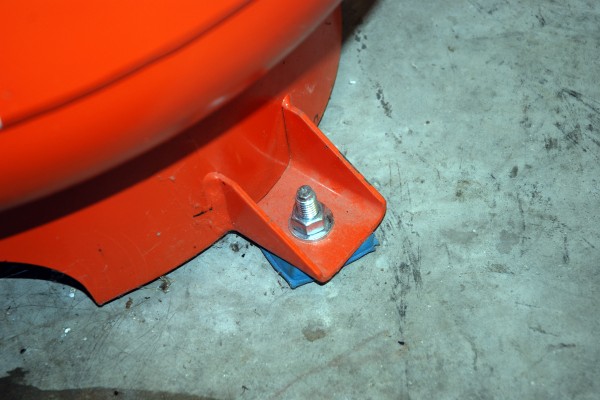For most enthusiasts, having a supply of compressed air in the garage or shop is not a luxury—it’s a must-have, second only to electricity. The only folks who would question the importance of a shop compressor are those who have never worked with air tools. Not only are most air tools much smaller (physically) than their electric counterparts, they can also do a lot more work.
In order to get the most out of your air tools, you need an air compressor correctly sized to meet your air-capacity requirements. For example, a small, portable one-cylinder compressor will never keep up with an air ratchet, let alone a high-speed air drill.
Air compressors come in a variety of configurations, ranging from tankless inflating devices to heavy-duty industrial brutes. There are four major things to consider before purchasing an air compressor: pump configuration, tank size, power and electrical requirements.
Pump Configuration
There are three basic types of pumps commonly used today:
-
Lightweight invector compressors incorporate a universal motor with an air-cooling system, which, according to the manufacturer, extends the life of the compressor. They are best-suited for casual use, such as inflating tires or cleaning off parts with an air gun.
-
Direct-drive compressors feature standard induction motors. Direct drive pumps are oil-free, so they’re perfect for the occasional- to moderate-use owner who doesn’t want to deal with servicing issues.
-
Belt-drive pumps are quieter than their oil-free counterparts. They’re best suited for do-it-yourselfers and professionals who frequently use their air compressor. Belt-drive pumps will last three or more times longer than direct-drive models, but they require regular servicing (oil changes, filter changes, etc.). All heavy-duty commercial compressors you see in repair and body shops incorporate belt-driven pumps.
There are two different types of belt drive pumps commonly available. Single-stage pumps deliver compressed air directly to the tank. A two-stage pump creates pressurized air in a larger displacement, low-pressure cylinder, pumps it into a smaller high-pressure cylinder, and then fills the tank. The main reason for buying a compressor with a two-stage pump is to create an adequate supply of high-pressure air required for tools like a spray gun or air drill.
Many two-stage pumps are intercooled between stages to reduce heat buildup in the air supply. Compressing air creates heat, and less heat equals more efficiency.
Don’t confuse cylinders for stages. It is possible to purchase an air compressor with a two-cylinder, single-stage pump.
Getting Tanked
Air compressor tanks vary widely in size, ranging from two gallons to 120-plus US gallons. Some huge commercial models have 240-plus gallon tanks. Tools that work in short bursts—an impact wrench, for example—work reasonably well with a small tank. Tools that continuously use air such as die grinders, paint equipment, and sand blasters require a larger tank. If you can’t decide between two comparable air compressors, buy the one with the larger tank.
As tank size increases, so does the overall size of the compressor. If you want a big tank but have space concerns, consider a vertical tank instead of a horizontal model.
The Power Source
You can rate an air compressor in a number of ways. Some do it based on the pump output pressure or by the electric motor’s horsepower output. The real compressor performance gauge is output at a given pressure. The rate at which a compressor can deliver a volume of air is noted in cubic feet per minute (CFM). Because atmospheric pressure plays a role in how fast air moves into the cylinder, CFM varies with atmospheric pressure. It also varies with the air’s temperature and humidity. To create a standard, manufacturers calculate standard cubic feet per minute (SCFM for short) as CFM at sea level with 68 degrees F air at 36-percent relative humidity. SCFM ratings are given at a specific pressure—for example, 20 SCFM at 100 psi. If you reduce pressure, SCFM goes up and vice versa.
The SCFM and PSI ratings are important because they indicate which tools a specific compressor can operate. When choosing a compressor, make sure it can supply the amount of air and the pressure your tools need. Always select an air compressor that exceeds the SCFM requirement of your most powerful air tool.
This chart below gives you an idea of how much air common air tools require. This is only a general guide since some brands and configurations of air tools use more or less air.
Typical Air Tool CFM & PSI Requirements
| Tool | CFM | PSI |
|---|---|---|
| Air Hammer | 4.0 | 90 |
| Die Grinder (1/4″) | 4.0 | 90 |
| High Speed Grinder | 8.0 | 90 |
| Drill (3/8″) | 4.0 | 90 |
| Drill (1/2″) | 4.0 | 90 |
| Impact Driver (1/2″) | 4.0 | 90 |
| Impact Driver (3/4″) | 7.5 | 90 |
| Jitterbug Sander | 6.0 | 90 |
| Ratchet (1/4″) | 3.0 | 90 |
| Ratchet (3/8″) | 4.0 | 90 |
| Spray Gun (Commercial) | 4.0 — 7.0 | 30 — 70 |
| Board Sander | 7.0 | 90 |
| Upholstery Stapler | 2.0 | 30 |
Electrical Demands
Air compressor motors range from simple 110-volt, 1/2-horsepower jobs all the way up to giant three-phase, 220-240-volt monsters making 25-plus horsepower. The electrical service available to your house or shop dictates the largest compressor you can install (we’re talking 220-240 volt models here). The electricity supplied to the majority of residential properties consists of a single phase or voltage signal. The electricity used in heavy industry is generally three-phase power. Few, if any, residences have three-phase electrical capability. There are converters available that allow you to use a three-phase motor in a building wired for single phase, but it’s best to begin with a single-phase model.
When shopping for a compressor, keep an eye out for the amperage rating of the electrical motor. Electrical service is measured in amps. Amperage is like the size of the water pipe that feeds your house—the bigger the pipe, the more water that can be delivered. Typical homes have 100-, 150-, or 200-amp service. Oftentimes, the older the residence, the smaller the electrical service.
All compressor motors should have a tag that indicates the amperage of the motor. As the electric motor size (HP) goes up, so does the amperage requirement. It is definitely possible to overwhelm the electrical service in your workshop with a large compressor. For example, a five-horsepower, 230-volt motor has a 23-amp rating. To accommodate the compressor motor, a dedicated 30-amp circuit should be used in the shop panel. If you do the math, you see a residence with 100-amp service will be hard pressed to give up 30 amps just for an air compressor. 200-amp service is required in this situation.
Preventative Maintenance
An air compressor needs periodic maintenance to perform properly and live a long life. This maintenance schedule is easy to follow, and is based on a compressor that is used an average of 40 hours per week. You can adjust the schedule to suit your usage.
Daily: Drain moisture from the tank
Weekly: Check the pump oil level and top off if necessary
Quarterly:
- Change oil and filter
- Check condition and alignment of belt, flywheel and motor pulley
- Check operation of the safety valve
- Check pressure switch unloader to ensure the compressor unloads when the motor shuts down
- Clean dirt and dust from the pump fins and motor
2,000-Hour Maintenance:
- Lubricate electric motor
- Inspect and replace as necessary the pump valves, check valves, safety valves, pressure gauge, and belt(s)
Like any other tool, when it comes to air compressors, you definitely get what you pay for. That’s why it is always a good idea to buy a compressor from a company with good track record, like Campbell Hausfeld or Ingersoll Rand.











What’s the overall cost in Ja$ to get in Ja